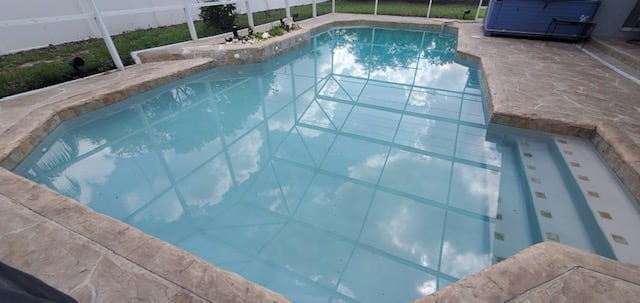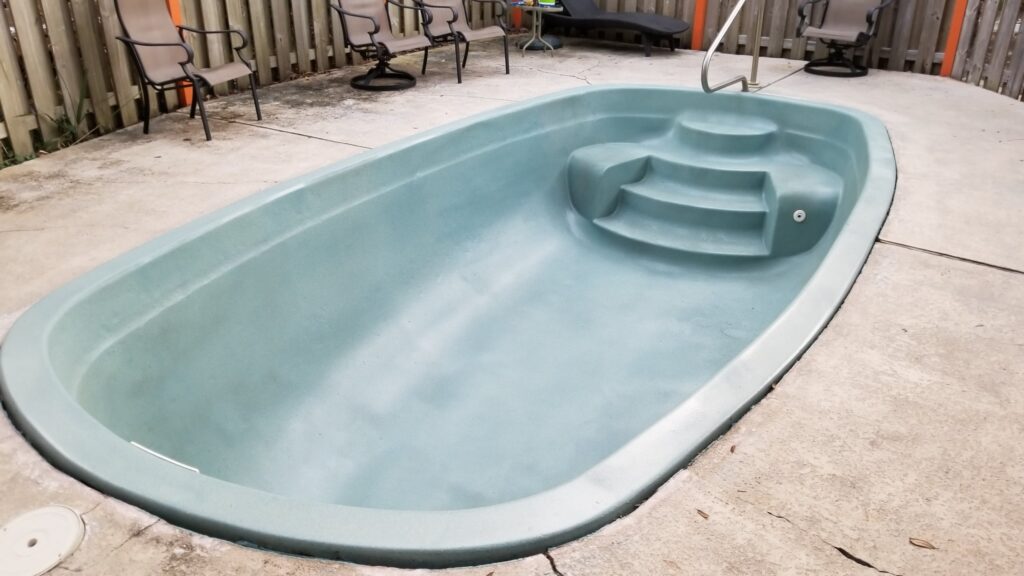What to Do After Pool Resurfacing?

Resurfacing your pool is a big step in ensuring it remains a sparkling oasis.
This article will guide you through the necessary steps for post-resurfacing care, from plaster dust removal to maintaining optimal water chemistry.
Steps for Proper Pool Care After Resurfacing
Prepare for pool use the next day by following specific procedures outlined in the resurfacing instructions. Monitor and maintain appropriate water chemistry levels, brushing the pool surface as needed to ensure a clean and well-maintained finish.
Fill Day Preparation
Getting your pool resurfaced is a big step towards a stunning backyard oasis. It’s crucial to start off on the right foot with proper fill day preparation to ensure the new surface cures correctly and lasts for years. The curing time will vary depending on the material used.
- Check all equipment before starting to fill the pool, making sure everything is in working order.
- Inspect the newly resurfaced pool for any cracks or damage to address these issues immediately.
- Begin filling the pool with water as soon as the resurfacing is complete to prevent any damage from sun exposure.
- Use a clean hose filter when filling the pool to avoid introducing any debris or contaminants into your fresh surface.
- Monitor the water level closely during filling to ensure an even spread across the new surface, which helps in preventing uneven curing.
- Adjust the fill speed if necessary to prevent strong water flow from damaging the fresh plaster.
- Once filled, initiate proper pool startup procedures recommended by professionals, tailoring them specifically to your pool’s needs.
- Test and balance chemical levels according to pool plaster care instructions, focusing on stabilizing chlorine usage and pH levels for plaster hydration.
- Schedule a follow-up inspection with your pool service provider after filling, ensuring everything functions correctly and confirming that no steps were missed during preparation.
Taking these steps guarantees your resurfaced pool starts its curing process under optimal conditions.
Daily Water Chemistry and Brushing
After filling the pool and preparing it for usage, another critical aspect of post-resurfacing care is maintaining the water chemistry and regular brushing to ensure the longevity of the new surface. Here are some essential steps to follow:
- Test the water chemistry daily using a reliable pool water testing kit to maintain proper pH levels, alkalinity, and sanitizer levels.
- Adjust chemical levels as needed based on the test results to keep the water balanced and prevent any damage to the newly resurfaced pool.
- Brush the pool walls and floor daily using a nylon bristle brush to remove any plaster residue or dust that may still be present after resurfacing.
- Pay particular attention to brushing around steps, benches, and other areas where debris and plaster dust can accumulate.
- Use a vacuum equipped with a filter capable of capturing fine particles to remove any loose plaster residue from the pool bottom.
- Regularly check for calcium build-up on the pool surfaces and use appropriate chemicals or cleaning methods to prevent scaling.
- Monitor the water clarity and adjust filtration settings if necessary to ensure optimal circulation and cleanliness.
- Keep a detailed record of water test results and chemical adjustments for future reference and maintenance planning.
Protecting Your Resurfaced Pool
Protect your resurfaced pool by selecting a reputable pool service provider and using the right chemicals and equipment for maintenance. Timely upkeep is essential to maintain the integrity of the newly resurfaced pool.
Choosing the Right Pool Service Provider
Choosing the right pool service provider is crucial for ensuring proper maintenance and care of your newly resurfaced pool. Look for a qualified and experienced service provider who understands the intricacies of pool maintenance post-resurfacing. This can help you start swimming soon after resurfacing.
It’s essential to choose a professional who follows the recommended maintenance and care instructions, uses appropriate chemicals and equipment, and offers timely maintenance to protect the investment you’ve made in resurfacing your pool.
Proper Use of Chemicals and Equipment
After selecting the right pool service provider, proper use of chemicals and equipment is crucial for maintaining a resurfaced pool. Adhering to the recommended maintenance instructions from professionals post-resurfacing is essential in prolonging the new surface’s lifespan.
Introducing ecoFINISH
For those seeking an even more efficient and durable solution, ecoFINISH coatings like aquaBRIGHT and polyFIBRO offer an innovative alternative. These advanced coatings can dry almost immediately and cure in minutes, allowing you to refill the pool the same day. The quick application and curing time are due to ecoFINISH’s unique composition, providing a seamless installation process. This makes ecoFINISH an ideal choice for those wanting a quick, durable, and visually appealing pool finish with minimal downtime.

Conclusion
Resurfacing your pool is a significant investment. Start with careful preparation on fill day. Check all equipment, address any issues, and monitor the filling process to ensure even curing.
Maintain proper water chemistry by testing and adjusting levels daily. Brush and vacuum regularly to remove plaster dust and prevent calcium buildup. Choose a reputable pool service provider and use the right chemicals and equipment, following professional guidelines.
By following these steps, you can enjoy a beautiful, well-maintained pool for years to come.
FAQs
After pool resurfacing, it’s important to focus on pool curing and plaster hydration. This involves proper water treatment and careful monitoring of the new surface.
Yes, following specific pool plaster instructions is crucial in preserving your renovated swimming area. These may include steps like maintaining certain water levels and temperatures for optimal curing.
If you don’t resurface your pool, it can develop cracks and leaks, leading to structural damage. Neglecting resurfacing also reduces the pool’s lifespan and can result in higher repair costs and safety hazards.
While replastering is a form of resurfacing using plaster, resurfacing encompasses a wider range of materials and techniques to renew a pool’s interior.
The best time to resurface a pool is during the spring or fall when temperatures are moderate, avoiding the extreme heat of summer and the cold of winter. This ensures optimal curing conditions and minimal disruption to pool use
